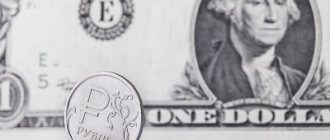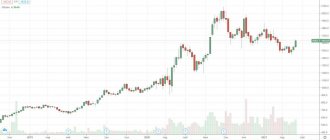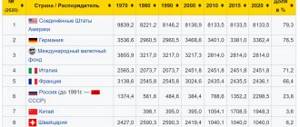Lazy Investor Blog > News
There is a lot of speculation in the media that the main cause of financial crises is the abandonment of the gold standard. The topic of returning to the previous system is also actively discussed. Let's see what is hidden behind this sonorous phrase, and how true are the postulates about its universality.
What it is?
The gold standard system is an international monetary system that is based on the officially assigned gold content of each individual unit of a national currency. Central banks of states are obliged to carry out purchase and sale transactions of national currency in exchange for this metal. That is, in essence, we are talking about a fixed exchange rate of national monetary units that was established in relation to it. The terms of the gold standard implied that anyone could exchange a banknote for an appropriate amount of the precious metal at any time.
For example, the 1928 US $20 bill was equivalent to one troy ounce of gold (31.1 grams).
Thanks to the introduction of such a standard, the national currency could be freely converted into valuable metal within the country. The state could also regulate the exchange rate due to the inflow or outflow of precious metals, without limiting its export or import. This approach made national currencies very stable.
The essence of the gold standard is quite simple, but it helped solve many economic problems of the time. Unfortunately, modern realities demanded changes, and this system had to be abandoned.
The Big Seven and your money
— What is the difference between a programmer and a politician? — The programmer is paid money for working programs.
The abolition of the gold standard turned the entire world politics upside down. As soon as states stopped directly influencing monetary policy, a lot of problems arose in coordinating economic processes. Therefore, in 1975, an informal summit of heads of state was held, which was later called the “Group of Seven”, abbreviated as G7, which is now usually called the “Big Seven”.
At this summit, fixed gold prices were abolished. That is, gold has become a common commodity.
This, by the way, is the answer to the question: is it worth investing in gold? No. This is the same as investing your savings in zinc or lead. Gold is now an ordinary commodity, and it does not have any special financial advantages.
After the abolition of the gold standard, the technological race of states was launched.
After all, according to the Jamaican system, the money will go to those who have more modern IT technologies. They are the ones who make it possible to launch the most knowledge-intensive, and, therefore, the most expensive types of goods.
Modern currencies are not backed by gold, they are backed by computer power. It is no coincidence that the richest man in the world is Bill Gates - the man who taught everyone how to operate computers. Well, as a result, the richest companies in the world are IT companies.
What does this mean for you personally?
Wealth was once defined by gold mines. Therefore, until 1973, the best advice for a person who wanted big money was: “Find a gold mine.” This is now outdated.
Now the gold mine is computers. Your gold mine is right in front of you - your PC (laptop, tablet or smartphone). You can make money right now using your computer.
You immediately ask: “How?” To do this, you need to look at how other market leaders did it:
- Microsoft – help you use your computer.
- Google – helps you search for information using your computer.
- Amazon - helps you buy using your computer.
- PayPal – helps you pay using your computer.
And so on. Think about how you can help people using a computer.
Your gold mine is right in front of you. This is your computer. Mine gold!
| Want to get your finances in order? If you are constantly short of money, then I recommend taking my most popular course “The ABC of money: what you need to know about money so that you can have it” See the course description at the link: https://sheremetev.aoserver.ru/?r=ac&id=6381&lg=ru
If you want to get a simple step-by-step method for increasing money in your wallet, then order the “ABC of Money” course using the link below: https://sheremetev.aoserver.ru/?r=ac&id=6381&lg=ru |
History of origin
The century of its existence was short-lived, but it radically changed the world monetary system. The first country to introduce the gold standard was Great Britain. This happened in the 19th century. The development of the gold standard in the world has acquired an avalanche-like character. The USA, Germany, Belgium, France and other countries have adopted this economic principle. At that time, it was the gold standard that ensured stability and economic development. It was introduced in Russia by the famous reformer, Minister of Finance Sergei Witte. In 1898, Tsarist Russia allowed the sale and purchase of gold coins.
When did the gold standard end?
Historians and economists talk about two stages in the implementation of the gold standard - from 1880 to 1914, that is, before the outbreak of the First World War, and from 1925 to 1934. The first stage is characterized by rather small government budgets, low inflation, and more or less uniform economic cycles. London at that time was the center of financial life and regulated many areas. Each state had at its disposal a sufficient supply of gold for the functioning of the system. But at that time, the first problems had already appeared: the minting of coins did not keep pace with the pace of economic growth and could not fully meet the growing needs.
The First World War and the economic chaos inherent in any military action put an end to the first stage of the gold standard. In the mid-20s of the last century, Great Britain tried in every possible way to restore its existence, but then a large-scale economic crisis intervened - the Great Depression. Some countries tried to stabilize the situation through the gold exchange system. It means that the exchange rate of the national currency is pegged not to gold, but to another currency, which is nevertheless backed by this precious metal. But the national currency could not be directly exchanged for it. European countries relied on the pound sterling.
However, Great Britain itself in the early 30s abolished the gold standard, which it had once introduced first. The reason for this was that many European states had accumulated a significant supply of pounds sterling and exchanged it in London for the precious metal. Thus, the country's gold reserves began to decline rapidly, which, of course, could not be met with approval.
Why did they abandon the gold standard?
On the one hand, the gold standard provides security guarantees for each paper banknote. The population and other countries are confident in the exchange rate of a particular country. On the other hand, all the gold slowly begins to flow from one country to another. At the same time, for both sides this issue is not as rosy as it might seem at first glance.
The country that imports more goods gives gold to another country. Therefore, the money supply decreases. There is less money. Deflation occurs. Another country, on the contrary, prints more and more money, but this did not happen, because the government was afraid of inflation, so they issued securities at high interest rates in order to somehow reduce the money supply in circulation. As a result, deflation also developed here.
Ultimately, these phenomena lead to a decline in production, which means a drop in GDP. Economic growth was not only absent, but also began to decline.
At the time of 2019-2020. The national debt of the United States and many other leading economies of the world is growing and growing. Money is printed to stimulate economic growth. Some are starting to say that we need to return to the gold standard. However, not everyone remembers the story. Deflation is much worse for the economy than inflation. Therefore, no one plans to repeat the same mistakes from the past.
Reasons for cancellation
There were many reasons, but the main contribution was made by great upheavals in the form of the largest war in history in Europe (at that time) and the economic crisis. The gold standard, which worked well in stable circumstances with predictable developments, became a liability in troubled times.
High post-war inflation had a decisive influence on the decisions of many state leaders. The result was the abolition of the rigid peg of national currencies to gold.
The birth of the gold exchange standard
The gold exchange standard is a system that provides for the possibility of exchanging banknotes for the mottos of countries that back their currencies with gold.
In countries that took part in the hostilities of the First World War, significant changes occurred in the ratio of gold reserves and the total money supply. This caused an unprecedented increase in inflation. It was under these conditions that the gold exchange standard was born.
The gold exchange standard provided for the possibility of exchanging banknotes not for gold itself, but for banknotes of other countries (mottos), which could then be converted into gold.
The main mottos at that time were the English pound sterling and the American dollar. However, gold retained its status as a legitimate international currency. The gold exchange standard was legislated at the Genoa Conference in 1922.
The war caused a split in the core of the gold bloc countries. Investors began to massively transfer their savings into pounds sterling, this phenomenon caused a payments imbalance. This necessitated the need for extremely strict currency control in Great Britain and its deferment of domestic and international payments.
Advantages
One of the main advantages, of course, is ensuring the stability of exchange rates. Countries that introduced this system gave impetus to the development of international trade, the volume of which was constantly growing. Exchange rates were easily predicted, and this gave confidence in the strength of trade relationships and the ability to fulfill their obligations. Also, balance sheet deficits were almost automatically eliminated due to the free import or export of gold outside the country.
Flaws
There is no financial system that does not have its shortcomings. This also applies to the gold standard, which, unfortunately, limited the maximum possibilities for economic growth by the volume of reserves of this metal held by the state. There is also a risk of significant depletion of such strategic reserves if the demand for foreign currency exceeds supply. This made states potentially vulnerable.
Bretton Woods Agreement
After World War II, it was realized that a new economic model was needed for battle-torn states and their economies. A year before the end of the war, a major international conference was held in the small American town of Bretton Woods, in which 44 states, including the USSR, took part. It determined the main features of the future economic system. No one expected to return the classic gold standard. The economies of many European countries were devastated and could not support the provision of national currencies with hard metal. But nevertheless, the principles remained. Now national currencies were tied not directly to gold, but to those currencies that were backed by it. By the end of the war, only two countries could offer their currencies as starting points - Great Britain and the United States. However, the role of Great Britain was shaken by a serious crisis that broke out in the country in 1947. Since then, the American dollar has performed this function.
Development and collapse of the gold and exchange system
Despite the brilliant prospects, the gold standard has lost its original meaning. As part of the agreements reached at Bretton Woods, it was the dollar that replaced gold and began to play the role of the world reserve currency. However, some restrictions have been introduced. For example, the national currencies of countries were equated to the dollar at a certain rate, and exchange rate fluctuations had to remain within 1%. At the same time, the United States assumed obligations to exchange dollars for gold without any restrictions. This system was called the gold exchange system. It is more complex than the original gold standard, but economic and political realities required new solutions.
Risks and prospects of the modern monetary system
The main risk of a monetary unit that does not have a strong anchor in the form of gold remains the possibility of rapid depreciation. At the global level, the currency risk of exporters and importers plays a key role. It is due to free exchange rates, which can change quickly relative to each other. In addition, excessive issuance leads to the fact that profits in the market are redistributed in favor of the financial sector. Manufacturers account for a smaller part of it.
However, such a prospect for the development of the world monetary system as a return to the gold standard seems impossible today. This is explained, first of all, by the lack of gold reserves. The following scenarios are more likely:
- the formation of new transnational currencies similar to the euro;
- the emergence in the distant future of a global payment unit;
- an increase in the number of global reserve currencies;
- the prospect of switching to digital money, for example, in the form of cryptocurrencies.
I also recommend reading:
Title insurance – protection or extra payment?
How can you lose your apartment without title insurance?
Prospects for the standard in the global economy
The gold standard was of great importance for the development of the economies of individual countries, as well as for understanding the interdependence of states on general trends in the world economy, from which one cannot isolate oneself.
It was the first principles that made possible the emergence of a new economic model for regulating national currencies. By the way, it was during the Bretton Woods Conference that it was decided to create the International Monetary Fund and the International Bank for Reconstruction and Development. The latter is often called the World Bank, which indicates its role and influence on ongoing processes.
The Bretton Woods system existed until the mid-60s, when there was an understanding of the need for further reforms due to changed circumstances.
In the mid-70s, the Jamaican Conference took place, the results of which are still valid today. It was she who finally abolished the gold backing of national currencies, and also abolished the officially established price of gold, which became an ordinary commodity. Its price was regulated by the usual market principles of supply and demand.
From time to time, politicians and economists talk about the need to return to the gold standard, but so far modern economic realities do not allow these plans to be implemented.
Half a century without gold. On the anniversary of the abolition of the gold standard
August started in March
In March 1971, when the first reports appeared that the United States was preparing to abandon the free exchange of dollars for gold, the era of the gold exchange standard actually ended.
Such plans for the Republican administration of Richard Nixon did not arise out of the blue, because the Bretton Woods system was bursting at the seams. The reason was well known. Since World War II, the United States has continuously flooded the world with billions of unbacked dollars. Both political adventures, such as the Cuban Missile Crisis and Vietnam, and the recovery of the economies of Western Europe and Japan soon worked against the dollar.
Even then, there were attempts to return from American vaults part of the gold deposited under “gold bonds”, the issue of which began back in 1934. This was one of the well-worked means of combating the Great Depression.
Later, gold from the reserves of countries that were victims of the attack of the Third Reich, and then a significant part of Nazi gold, ended up in the United States. Personally, for French President Charles de Gaulle, the operation to return part of the gold reserves from American vaults was very expensive - it is believed, not without reason, that this was one of the reasons for his resignation in April 1969.
And 1971 began with the withdrawal of Germany from the Bretton Woods system, whose authorities had previously let the Deutsche Mark float freely. And then, following the example of de Gaulle, they decisively exchanged five billion dollars for gold at once. And already in March, analysts absolutely accurately predicted that the dollar would be “untied” from gold.
And so it happened.
Although it was only on August 15 that President Richard Nixon officially announced the suspension of the convertibility of the dollar into gold. And temporary. However, this was a real shock for the whole world - what happened was called
"Nixon Shock"
The Americans themselves once again “skimmed the cream”, devaluing the billions of dollars that they had previously generously given to the world.
Moreover, the “skimming of the cream” could have begun earlier. But in just three days of May 1971 (from the 3rd to the 5th), according to some estimates, at least a billion dollars were sold. Which led to a strong drop in its rate.
But the main thing was the immediate rise in gold prices, an ounce of which, instead of 35 dollars, began to be quoted at 45 or more. At the same time, Nixon’s team postponed the official devaluation of the dollar until August.
Not everything is gold
Few people now remember that the United States left the gold standard much earlier than everyone else.
And even before Bretton Woods, when the gold-dollar standard was legalized. Then there were slightly less radical decisions, such as the adoption of the Marshall Plan and the organization of the International Monetary Fund. The refusal to directly link money to gold, which happened exactly fifty years ago, did not turn the thousands of tons of gold that the countries of the world now have into reserves of a metal that no one needs. And the point here is not at all that real gold is still an important raw material for both jewelry and a number of other industries.
It seems that it is more important for the world to have some tangible reference point that can be relied upon, even when everything (or almost everything) goes remote. The experience of attitudes towards gold during the (still) short era of the pandemic convincingly shows that the demand for gold will not go away for many years.
Historically, gold became the basis for the standard not only because it was quite expensive. But at the same time, it was not hopelessly scarce. Gold was preserved in almost any conditions. It was not so difficult to divide his reserves. And replenish if necessary.
But the main thing is that it was convenient for everyone, everywhere.
And any more or less prepared person could be convinced that there was gold in front of him (simply by external signs). And no one, anywhere, for many centuries in their right mind, refused to accept gold as payment.
It’s not just that today those states whose economies are growing well (despite the notorious Covid in all its variations) are actively replenishing their gold reserves even without any gold. It’s not for nothing that Elon Musk and George Soros don’t give up gold. President (now former) Donald Trump did not refuse it either.
Even global projects (like the long-suffering Nord Stream 2), the Iranian Atom and the Silk Road are being implemented not without regard to the first of the metals. China, in general, made an unprecedented decision, offering the Eurasian countries located along the Silk Road the opportunity to increase the share of gold in backing their currencies.
At the same time, China announced plans to increase the volume of the state gold investment fund, initially formed for a modest $16 billion.
Noble deficiency
The growing demand for gold corresponds well with stock exchange games in oil, when a very small part of concluded contracts is backed by real goods.
Only with gold this trend is even more pronounced - simply because there is hundreds of times less of it in circulation. And no more than 0.2 percent of transactions are backed by physical gold. The acute shortage is not only due to demand from India and China, which continue to buy gold in huge quantities, supplying more than 50% of global consumer demand (jewelry, gold bars and coins). According to the World Gold Council (WGC), demand will at least remain the same in the coming years.
Among the reasons for the shortage is that Russia (one of the largest gold miners in the world) currently does not sell most of the gold it produces, but keeps it in reserves. It’s also a matter of speculation, when air trading (that is, including futures) brings no less profit than the simple sale of bullion.
At the same time, the New York Comex Exchange, one of the world's largest trading platforms for this precious metal, required enormous efforts to stop the outflow of gold. After all, shortly before the pandemic, its reserves there fell almost tenfold compared to August 2015.
Money, as is well known, is nothing more than a surrogate for trust. Mutual trust: on the part of both the seller and the buyer. For centuries, humanity believed almost exclusively in gold. And all attempts to replace it with something else ended either in riots or wars.
However, faith in the honest word of a banker, a merchant, and best of all, the head of state, became the basis for the appearance, first, not of gold, but of some other small change, and then of paper money. And finally, most recently - electronic currencies.
Don't worry about the dollar
The dollar, as we see, after it was “untied” from gold, depreciated many times over. But it has by no means ceased to be a world currency. And to seriously consider the bet on gold, made by many, as an attempt to really undermine the position of the dollar, can only be naive.
Is it worth repeating that the dollar, as a world currency, has not been dependent on the global gold price environment for a very long time.
Even if someone wants (for the sake of experiment) to start buying up all the gold in the world, this is unlikely to seriously affect the dollar. Especially now, in the era of electronic payments. Whoever invests in gold invests in something eternal, which does not age and does not lose demand. At least for the foreseeable future. Liquidity guaranteed. And changes in price, as a rule, happen much more often in favor of such an asset than to its detriment.
In addition, gold is a good means for diversifying assets, protected from risks like few others.










